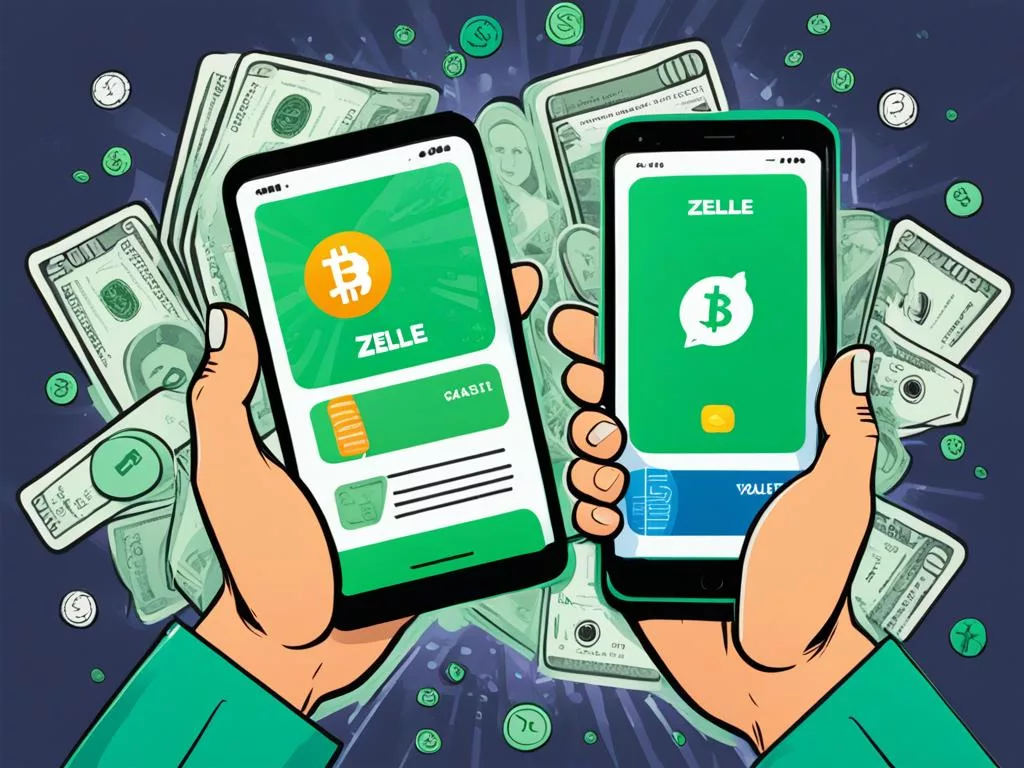Exploring mobile payments means looking closely at Zelle vs Cash App. Zelle quickly moves money between banks in the US. It links over 1,800 banking apps, has more than 115 million users, and shifted a huge $629 billion last year1. Starting with 17 bank partners in 2017, it now connects 1,800 financial bodies1. Cash App stands out by offering more than payments. It lets you send money fast in the US and UK, provides a Visa debit card, and lets you invest2.
My research into user stories helps deepen this guide to Zelle vs Cash App. Zelle works directly with banks for quick, no-cost transfers. Meanwhile, Cash App offers a variety of services. When comparing Zelle or Cash App, it’s clear they both have free P2P transactions. But, Cash App might charge for instant transfers and ATM uses2. In our Zelle vs Cash App review, remember that Zelle might cover you for unauthorized transactions under certain laws. Cash App suggests only sending money to people you know well3.
Understanding the Basics: How Zelle and Cash App Fit into Your Digital Wallet
In the digital age, it’s important to grasp how Zelle and Cash App enhance our daily money dealings. The Zelle app works closely with over 1,700 U.S. banks4. It easily links to your bank account, avoiding the need for a separate app balance. For businesses, choosing between Zelle vs Cash App means faster transactions without fees since Zelle transfers are free4.
Contrastingly, Cash App operates independently, acting as both a money transfer and a wider financial service. It holds a Cash App balance and offers FDIC insurance, unlike Zelle. This detail is vital for those with larger balances seeking the security of government-backed insurance45.

Zelle shines with its quick transfers, often arriving in minutes5, and no charges for its service. Using just an email or phone number, Zelle reduces the risk of fraud. However, Zelle doesn’t allow credit card links for payments5. On the other hand, Cash App allows credit card usage for a 3% fee6.
Choosing between them also involves considering transaction limits. Zelle, backed by banks, often caps daily transfers at $1,0004. Some banks may let you send up to $5,000 a month. Cash App has flexible limits that increase with verified accounts. It even offers free ATM withdrawals after certain deposits6.
Zelle advises treating money transfers as cash, suggesting users only send money to people they trust5. This caution is due to the lack of payment protection similar to cards, yet it’s mostly considered safe4. Meanwhile, Cash App charges 1.5% for instant access to funds. This makes users think over their financial choices carefully6.
After looking into both, it’s clear that choosing the right app depends on personal or business financial needs. Will you pick Zelle for its direct bank links, or Cash App for its broader features? Thinking about fees, limits, safety, and ease will help pick the best fit for your lifestyle.
Fees and Limits: A Critical Factor in Choosing Between Zelle and Cash App
Choosing between Zelle and Cash App involves looking at their fees and transfer limits. Both offer free peer-to-peer transfers, which users like discussing on online forums like Reddit. However, Zelle stands out due to its secure connections with over a thousand banks and credit unions. This direct link offers added security since there’s no middleman handling your money. For those not linked to a bank, Zelle limits transactions to $500 per week. This suits users with moderate financial needs.
Cash App protects users differently. It limits loss to $50 for unauthorized transactions if reported within two days. This matches Apple Pay’s policy but differs in the long term. For users verified on Cash App, limits can increase, offering flexibility beyond Zelle’s $500 weekly cap. Meanwhile, 65% of Americans worry about the data financial apps collect. It’s important to consider that Cash App gathers personal data like passport and driver’s license numbers.
Beyond just sending money, Cash App and Zelle have other fees. For quick transactions and ATM withdrawals, Cash App charges fees. Although costly, some may find these options convenient. It’s also crucial to note both Zelle and Cash App collect user data, like photos and locations. This common practice raises concerns about privacy in our digital age.
Source Links
- https://www.usnews.com/banking/articles/guide-to-zelle-payments
- https://wise.com/us/blog/apps-like-cash-app
- https://www.zellepay.com/safety-education/fraud-scams-overview
- https://rates.fm/payment-systems/what-is-zelle-and-how-does-it-work-a-comprehensive-guide/
- https://www.nerdwallet.com/article/banking/zelle-peer-to-peer-money-transfer-service
- https://www.cnbc.com/select/how-to-use-zelle/

